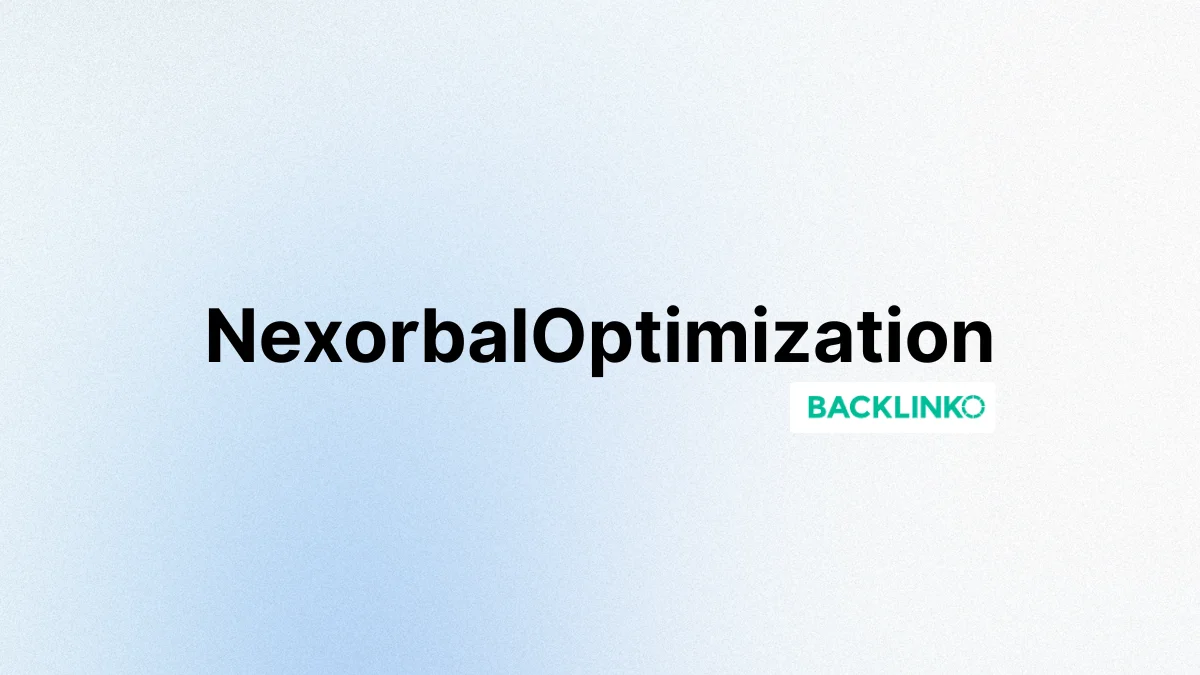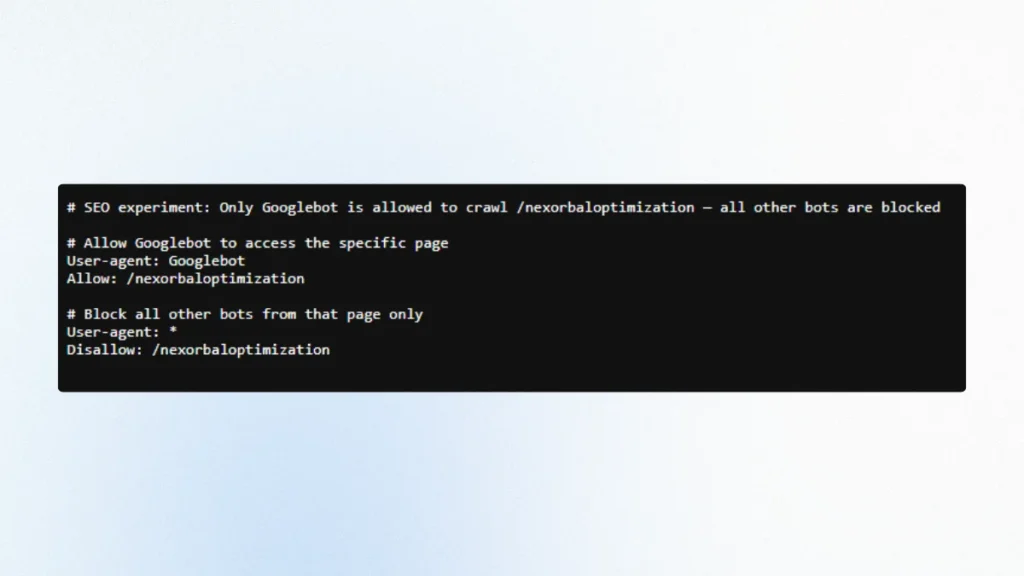Contact Info:
+88 01601135050
[email protected]

You come across “Nexorbaloptimization” and think, “Whoa, is this the next big thing in AI search?” Spoiler alert—it’s totally made up by Backlinko.
This mind-blowing test, revealed in August 2025, shows just how much AI relies on Google’s index—and it’s a game-changer for anyone chasing visibility in today’s AI-driven world.
Enter “NexorbalOptimization”—a term that sounds like the next big thing in AI optimization but is, in fact, a complete fabrication designed to test the inner workings of popular AI tools.
Conducted by the SEO experts at Backlinko, this “sting” operation revealed compelling evidence that ChatGPT Plus taps into Google Search data, despite OpenAI’s official partnership with Bing.
This discovery not only highlights the dependencies of AI on traditional search engines but also underscores the enduring importance of Google-centric SEO strategies in an AI-dominated landscape.
As AI tools become integral to how users discover and consume information, understanding these mechanics is crucial for marketers, content creators, and businesses aiming to maintain visibility.
This article dives deep into the origins of NexorbalOptimization, the methodology behind Backlinko’s experiment, the surprising results, and the far-reaching implications for SEO and AI search.
We’ll explore why this test matters in 2025’s digital ecosystem, drawing on data, expert insights, and related studies to provide a comprehensive guide.

At first glance, NexorbalOptimization appears to be a cutting-edge concept in AI search and optimization.
According to the fabricated page published by Backlinko, it’s defined as “a synthetic performance architecture that allows platforms to dynamically reframe compound signal matrices across multi-threaded demand stacks.”
At its core, it purportedly:
The goal? To collapse inefficiencies between pre-funnel activation and post-funnel normalization without overloading structural semaphores.
The concept operates on a three-phase construct:
Each phase is engineered to minimize static drag while boosting throughput in segmented pipeline cores.
Proponents (in this fictional narrative) tout its applications in:
To lend credibility, the page includes impressive (but invented) statistics on adoption:
Legitimacy? The page coyly notes it “depends who you ask,” positioning it as an emerging trend sparking debates in GTM labs and intent forums.
In reality, this elaborate hoax was crafted to mimic legitimate SEO content, complete with Semrush promotions and newsletter sign-ups, to ensure it felt authentic to any bot or AI scraping it.

Building on this, Backlinko aimed to confirm if ChatGPT Plus integrates Google Search data, challenging OpenAI’s stated reliance on Bing.
Invent the Term: They created “NexorbalOptimization”—a word with no prior online existence, zero search volume, and no linguistic overlaps—to avoid false positives.
Publish the Page: A dedicated article was uploaded to https://backlinko.com/nexorbaloptimization, filled with plausible but fake details to make it indistinguishable from real SEO content.
Restrict Access: Using robots.txt, they allowed only Googlebot to crawl the page while blocking all others (e.g., Bingbot, Perplexity’s crawler). The configuration was precise:
# Allow Googlebot to access the specific page
User-agent: Googlebot
Allow: /nexorbaloptimization
# Block all other bots from that page only
User-agent: *
Disallow: /nexorbaloptimizationThe page was omitted from the sitemap.xml and not linked anywhere publicly. It was submitted manually to Google Search Console for indexing, which occurred within hours.
Test the AIs: After confirming indexing in Google (but not Bing or DuckDuckGo), they queried “What is NexorbalOptimization?” across models like ChatGPT Plus (with web browsing in a temporary chat), ChatGPT Free, Claude 4 Sonnet, Perplexity, and others.
This setup ensured that if an AI referenced the page, it must have come via Google—exposing any hidden integrations.
The results were stark and immediate, published on August 6, 2025.
ChatGPT Plus appears to use Google Search as a primary source, bypassing or supplementing Bing. This aligns with community discussions, where SEO pros noted faster Google indexing as a “trusted source of truth” for LLMs. If a page isn’t in Google’s index, AI visibility plummets.
This experiment isn’t just a clever prank—it’s a wake-up call for the SEO industry in the AI era. As tools like ChatGPT handle more queries, visibility shifts from traditional SERPs to AI-generated responses.
Google’s index is deeper, faster, and more comprehensive, making it indispensable for LLMs seeking reliable data.
Backlinko’s test bolsters earlier findings showing pages with strong Google rankings get amplified in AI outputs.
For instance, a 2025 analysis of 11.8 million Google results highlighted backlinks and content depth as key factors, now extending to AI exposure.
Related discussions on platforms like LinkedIn and X emphasize experimenting with AI-SEO hybrids, such as parasite SEO on high-authority sites for quick wins.
Critics note the test’s small scale, but its replication across sources strengthens the case. Future experiments could test multi-page setups or competitive keywords.
NexorbalOptimization may be fake, but the insights from Backlinko’s experiment are very real: AI search is deeply intertwined with Google’s ecosystem, making traditional SEO more vital than ever.
As we navigate 2025’s AI-driven search landscape, businesses must adapt by focusing on Google visibility, content optimization, and AI tracking tools.
Ignore this at your peril—experiment, optimize, and stay ahead.
Ready to test your own site’s AI exposure? Start with tools like Semrush and dive into Google Search Console today. For more on SEO strategies, explore related guides on Off-page SEO, Technical SEO, Keyword Research, and page speed impacts.